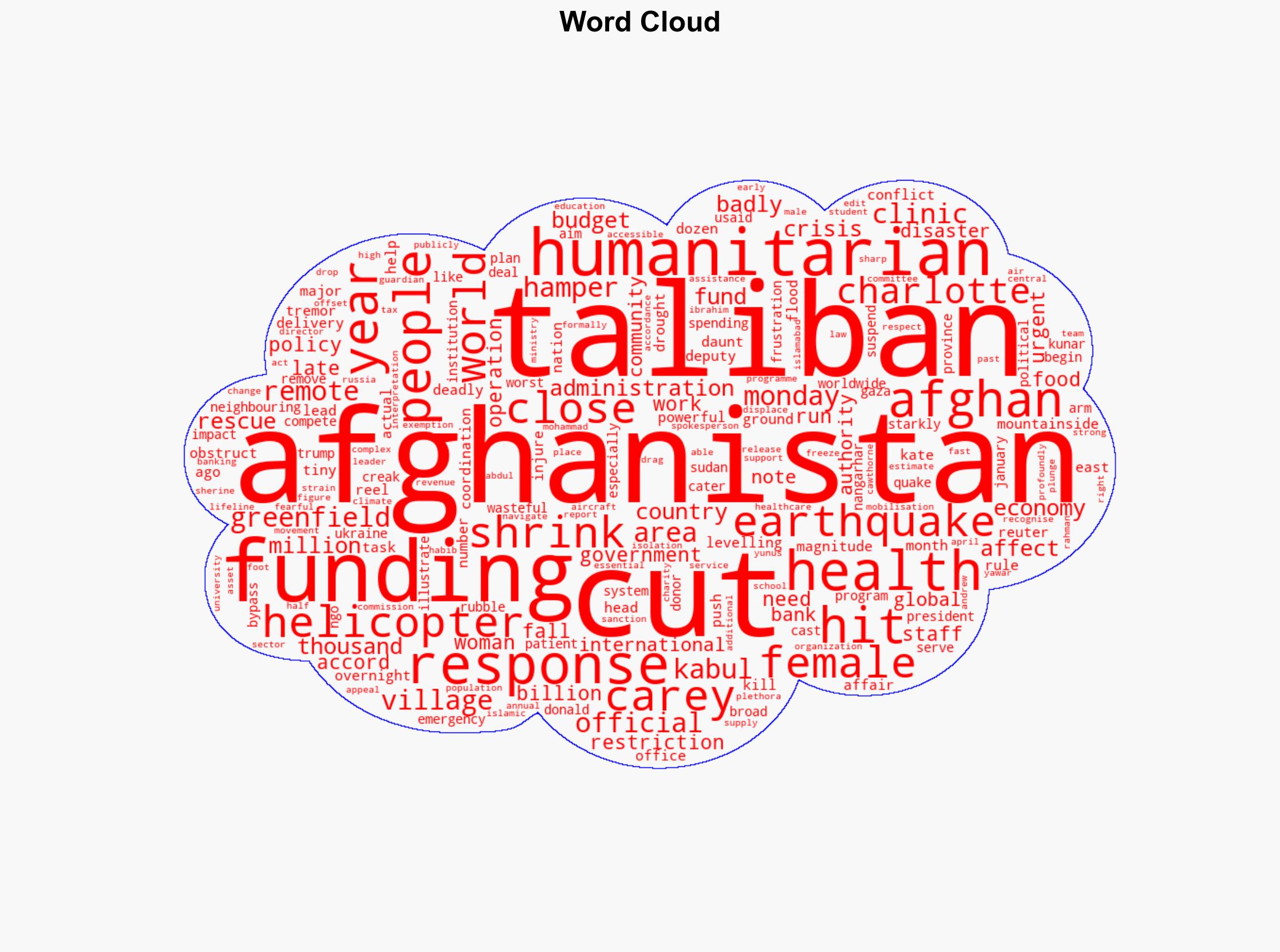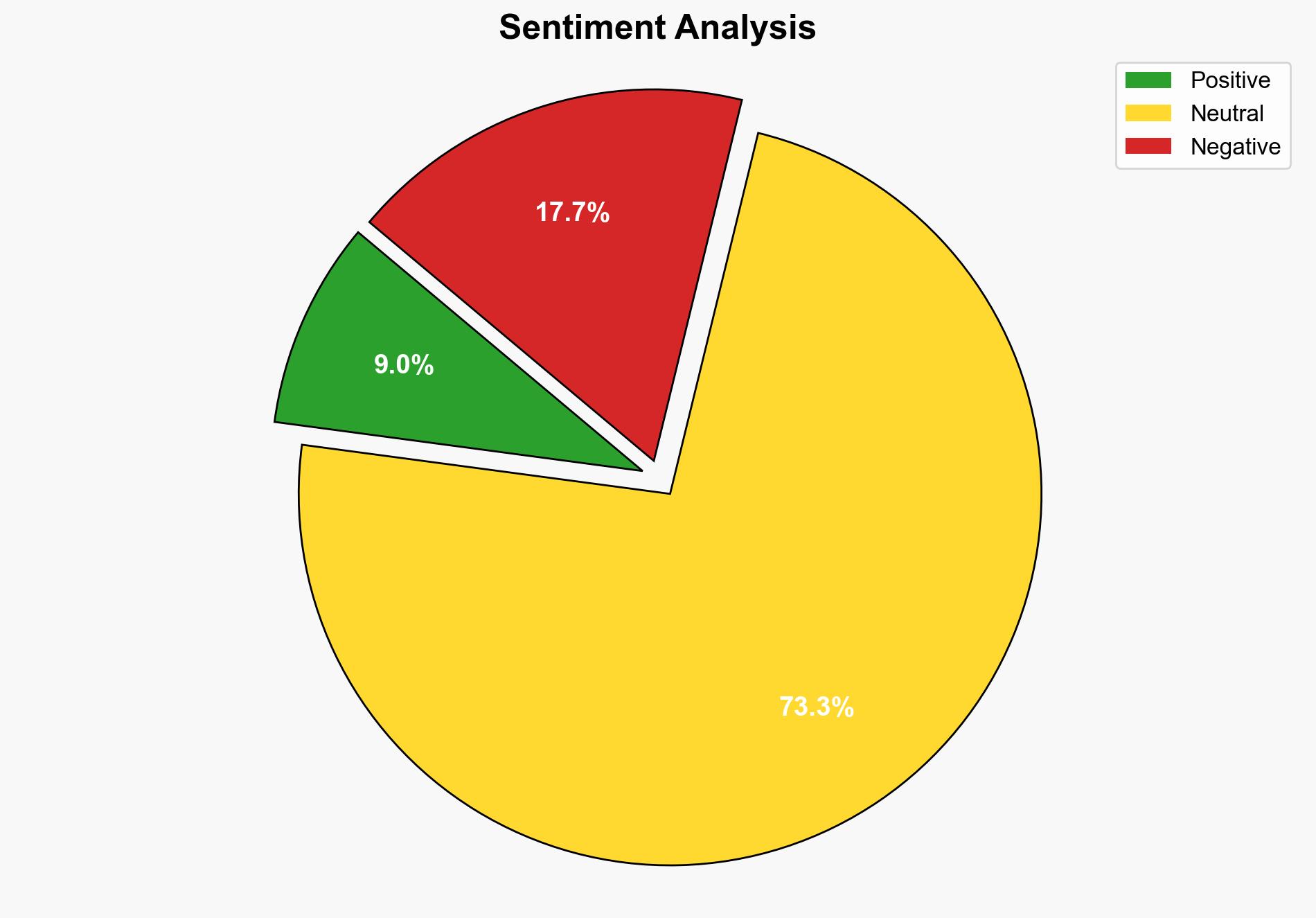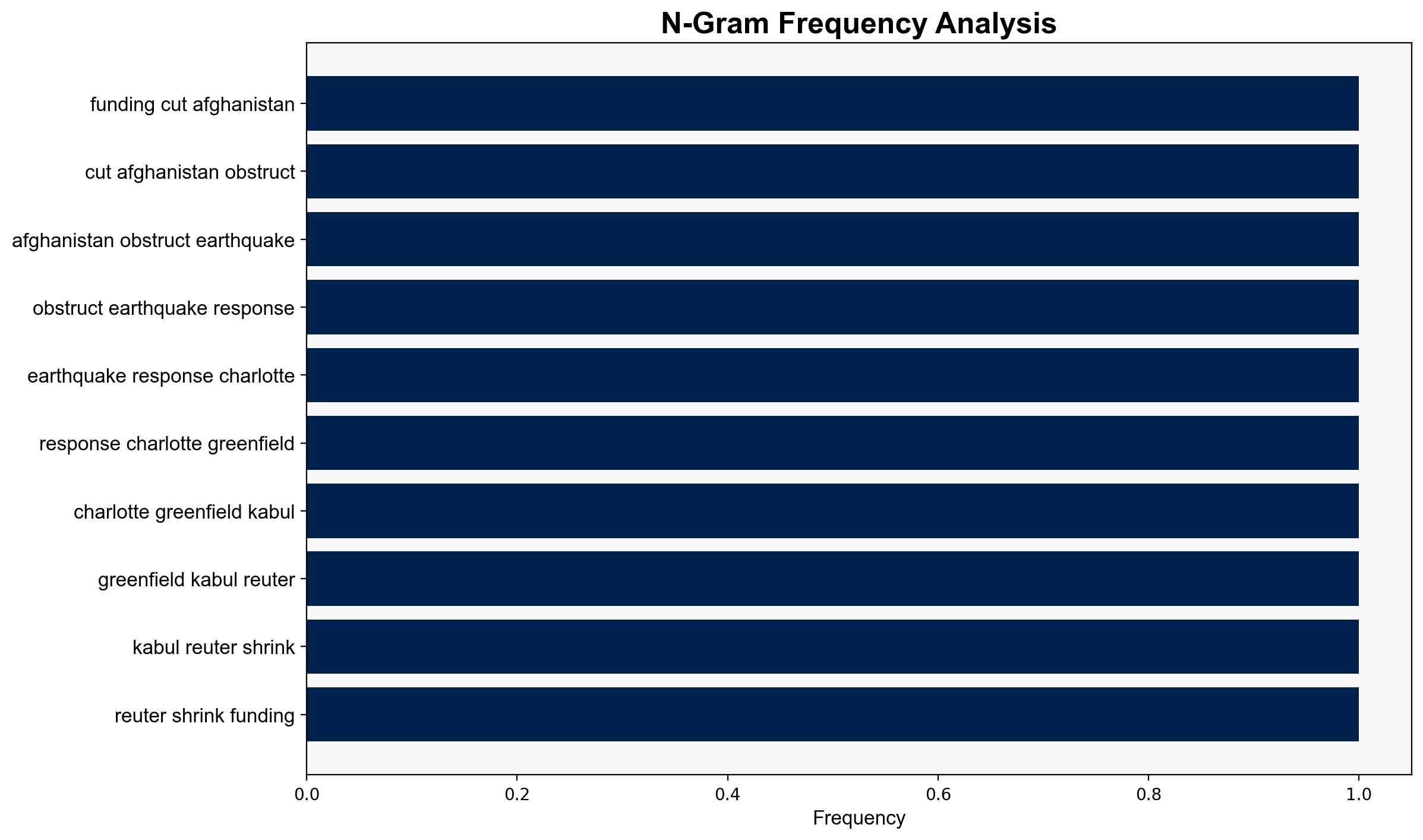Funding cuts to Afghanistan obstruct earthquake response – AOL
Published on: 2025-09-01
Intelligence Report: Funding cuts to Afghanistan obstruct earthquake response – AOL
1. BLUF (Bottom Line Up Front)
The most supported hypothesis is that international funding cuts, particularly from the United States, have significantly impaired Afghanistan’s ability to respond to natural disasters, such as the recent earthquake. This is compounded by geopolitical isolation and internal policy decisions by the Taliban. Confidence Level: High. Recommended action includes advocating for targeted humanitarian aid that bypasses political institutions to directly address urgent needs.
2. Competing Hypotheses
1. **Hypothesis A**: The primary cause of the obstructed earthquake response is the international funding cuts, which have directly reduced the operational capacity of humanitarian efforts in Afghanistan.
2. **Hypothesis B**: The obstructed response is primarily due to the Taliban’s governance policies, which have led to international isolation and a reluctance among donors to provide aid, irrespective of funding cuts.
Using ACH 2.0, Hypothesis A is better supported due to the direct correlation between funding cuts and the operational challenges reported by humanitarian agencies. Hypothesis B, while plausible, relies heavily on the assumption that policy changes alone are the main deterrent for aid, which is less directly evidenced in the source.
3. Key Assumptions and Red Flags
– **Assumptions**: It is assumed that funding cuts are the primary factor affecting humanitarian operations, and that the Taliban’s policies are secondary.
– **Red Flags**: The report lacks specific data on the exact impact of Taliban policies on donor decisions, which could skew the analysis.
– **Blind Spots**: Potential biases in reporting due to geopolitical tensions and the lack of detailed financial data on aid distribution.
4. Implications and Strategic Risks
The funding cuts and subsequent humanitarian response challenges could lead to increased instability in Afghanistan, exacerbating existing crises such as food insecurity and displacement. This may result in a humanitarian catastrophe with regional spillover effects, including increased migration and potential radicalization due to unmet basic needs.
5. Recommendations and Outlook
- Advocate for international coalitions to establish a neutral humanitarian fund that bypasses political entities, ensuring aid reaches those in need.
- Engage with regional partners to monitor and address potential migration flows and security threats.
- Scenario Projections:
- Best: International community agrees on a neutral aid mechanism, improving response capacity.
- Worst: Continued funding cuts and isolation lead to a severe humanitarian crisis and regional instability.
- Most Likely: Partial restoration of aid with limited impact due to ongoing geopolitical tensions.
6. Key Individuals and Entities
– Charlotte Greenfield
– Kate Carey
– Abdul Rahman Habib
– Sherine Ibrahim
7. Thematic Tags
national security threats, humanitarian aid, geopolitical isolation, regional focus





